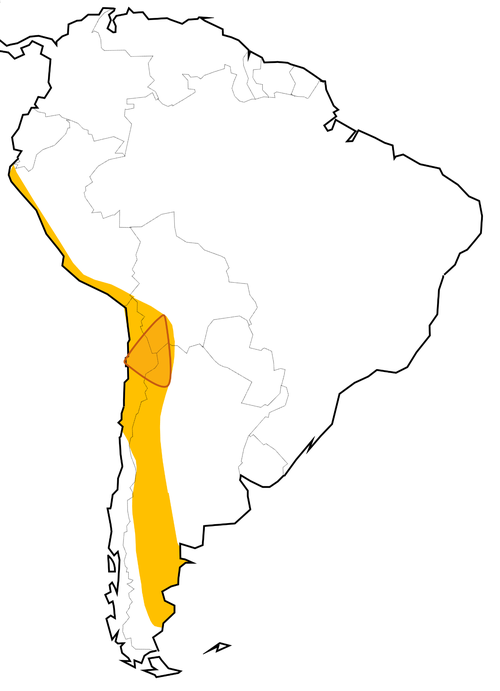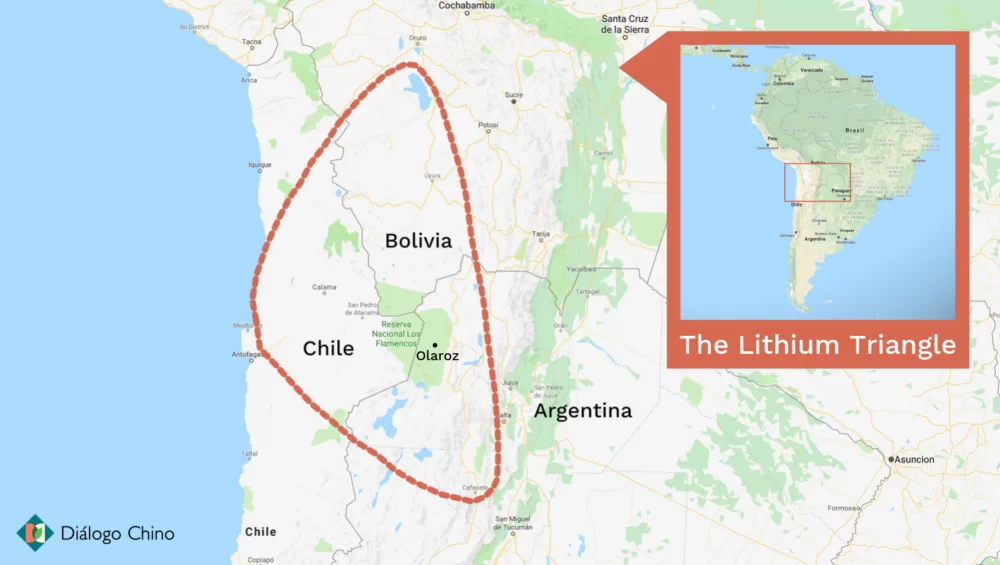This article is here to help you understand what’s up with the Lithium Triangle and why it’s making such a big impact in 2024. With the world shifting towards cleaner energy, knowing why lithium matters a lot is crucial for our joint effort to have a greener and more sustainable future.
India, 3rd largest energy consuming country in the world, is almost finalizing a big lithium deal with Argentina. Also teaming up with Australia and Chile too. A huge step towards reduction in carbon footprints.
Well……..Lithium Triangle doesn’t need any introduction.
It stands as a geographic powerhouse renowned for its extensive lithium reserves.
However, it has recently been making headlines across various news media outlets.
But Why?
There are two primary reasons: –
- Global community’s emphasis on Renewable Energy is resulting in high-demand of Lithium, which is primarily sourced from the Lithium Triangle.
- As the world is moving towards sustainable energy solutions – India is set to acquire five lithium blocks in Argentina. This striking deal isn’t confined to one nation, India is forging alliances with Australia and Chile as well.
To delve into the details, let’s explore the geographic significance of the Lithium Triangle and examine the implications of India’s burgeoning lithium deal, along with its potential impact on global sustainability efforts.
What Exactly is the Lithium Triangle – Exploring Global Lithium Reserves
Let’s begin with the understanding of the Lithium Triangle.
- The Lithium Triangle signifies a region within the Andes (longest continental mountain range in the world) that is rich in lithium reserves.
- Situated within the borders of Argentina, Bolivia and Chile, these countries collectively form what is known as the Lithium Triangle Countries.
- The lithium available in the triangle is concentrated in various salt pans. The largest areas are three main salt pans that define its vertex Salar de Uyuni in Bolivia, Salar de Atacama in Chile and Salar del Hombre Muerto in Argentina.
- Chile has the highest lithium concentration, measuring at 0.15% by weight.
- Interestingly, despite its name, the salt pans don’t form a triangular shape but instead create more of a crescent extending from Salar de Surire in the north and ending with Salar de Maricunga in the South. This is the reason it is now referred to as the Lithium Crescent.

Now, Let’s Explore Lithium & Its Significance in Green Energy
Located in the Group 1 of the Periodic Table, Lithium holds significant properties that make it a popular name in clean energy resources. Let’s understand Lithium in detail.
- The name ‘Lithium’ is derived from the word “Lithos” and represented with the Li symbol. In today’s world, it is also known as ‘White Gold’.
- It is a lightweight and highly reactive metal. Its properties make it a suitable candidate for various applications, majorly in the realm of battery technology.
- Nowadays, Lithium has become a crucial component in rechargeable batteries. Used in cell phones and laptops, digital cameras and electric vehicles.
- Moreover, it is also used in some non-rechargeable batteries like heart pacemakers, toys and clocks.
- Most of the lithium extracted from brine lake deposits. The most lithium-rich deposits are in Bolivia, Chile, and Argentina, named as Lithium Triangle.
- Importantly, Lithium-ion batteries play a crucial role in storing energy for solar panels, wind turbines and electric vehicles facilitating the global transition away from fossil fuels. This has led to exponential demand for Lithium resulting in a global consumption increase of over 40 % in 2022.
- The growing adoption of Lithium-ion batteries based electric vehicles not only reduces our dependence on fossil fuels but also contributes to lower carbon emissions, marking a substantial step towards a greener future.
- The race for lithium as renewable fuel is reshaping domestic and global policies. According to a 2021 U.S. Department of Energy report, there’s a commitment to establish a secure battery supply chain by 2030. This initiative aims to bolster U.S. economic competitiveness, foster job creation, drive decarbonization, promote social justice and meet national security needs.
Navigating Resource Geopolitics, Climate Change and the Lithium Landscape
The convergence of resource geopolitics, climate change and lithium demand is reshaping global dynamics. The world faces a growing need for minerals vital for high-end electronics and green energy. Analysing these developments is crucial to understand their multifaceted implications.
Did you know,
“Lithium prices are expected to increase 40 times by 2040”.
To make the most of these opportunities, Latin American nations like Bolivia must find the right balance between private sector involvement and government control for effective commercial use.
U.S. Involvement in Lithium Industry
Acknowledging the crucial role that lithium plays in the clean energy, the United States has decided to invest in domestic lithium projects. While these endeavours are noteworthy. It’s clear that the U.S. mines alone won’t be enough to meet the surging demand for lithium.
This is the reason that the United States entered into strategic collaborations with countries of the Lithium Triangle – a region comprising Bolivia, Chile and Argentina, rich in lithium resources.
Recent legislative initiatives, such as the Bipartisan Infrastructure Law, emphasize clean energy and lithium industry investments. This law places a strong emphasis on fostering clean energy technologies with lithium playing a central role in the transition towards a more sustainable energy landscape.
The landscape becomes even more intricate as concerns about competition with China come into play.
Global Lithium Supply Chains and Geopolitical Dynamics
The moment when Argentina and Chile had a stronghold on the supply of lithium to the U.S. in 2019, China also became a major player in the Latin American lithium industry, particularly in Bolivia. Today, China has established itself as a major player in lithium battery technologies and the electric vehicle sector. This dynamic sets the stage for economic rivalries, highlighting the strategic importance of lithium in the race for technological dominance on the global stage.
But, here’s the twist. To counter China’s dominance, the U.S. has forged alliances like the Mineral Security Partnership.
The aim of this alliance is to protect the mineral supply chains. Most importantly, reduce the dependence on specific nations. This geopolitical chess game involves strategic moves and potential retaliatory actions, underscoring the delicate balance in global resource politics.
China-U.S. Competition: U.S. Extent of Involvement and Ecological Considerations
In the global race for lithium, it’s like a big competition between China and the U.S. Think of it as a game where they both are trying to be the best in making batteries and electric cars.
So, the U.S. makes a plan called the Minerals Security Partnership, which is like their strategy to make sure they get enough minerals for batteries. But here’s the twist – they missed to include the Lithium Triangle countries. Now, China enters into Bolivia early, making the U.S. wonder if their plan is working. It’s like a puzzle, with pieces about the environment, money partnerships and how digging up lithium affects nature. The U.S. has to think hard about what they’re doing in the Lithium Triangle, considering everything from protecting nature to teaming up with companies. It’s not just about batteries; it’s a whole story shaping how the U.S. deals with lithium and clean energy on the world stage.
Lithium Extraction Challenges and Climate Impacts
Imagine a big treasure hunt for lithium in the Andean countries like Bolivia, promising lots of money.
But there’s a catch – getting this treasure can harm the environment. They dig up lithium from salt flats, using lots of water which can be a problem for local communities who need that water.
And here’s where it gets even trickier. Climate change is making things worse. In Bolivia and Argentina, people are noticing more problems because of the changing climate. There have been protests where people are saying, “Hey, we need to think about nature and our communities too!”
This situation takes us back to history. Remember when people got too greedy and dug up minerals, causing disasters? Like in some places, they dug too much and it led to big problems like polluted water and damaged lands. The protests in Bolivia and Argentina are like saying, “Let’s not repeat those mistakes.” It’s a lesson that tells us we need to find a balance – get the treasure, but also take care of our home, the Earth.
India’s Lithium Exploration Strategy
The Ministry of Mines, Government of India, is making strategic moves in the lithium arena. Partnering with Argentinian miner CAMYEN, India is on the verge of securing exploration rights for five lithium blocks. It is a pivotal step after its successful partnership with Australia in 2022. With an anticipated investment of around Rs 200 crore over the next five years, India aims to ensure a domestic supply of critical minerals.
This venture aligns with India’s broader goals, including net-zero emissions by 2070 and establishing itself as a manufacturing hub for electric vehicles. Argentina (holding 21% of the world’s lithium reserves) becomes a key partner in this pursuit. The exploration agreement with Argentina is part of India’s larger strategy to diversify sources. And reduce dependence on imports from Hong Kong and China. It marks a crucial step in India’s global lithium market and clean energy sector, contributing to the production of lithium-ion batteries used in various applications.
Bringing It All Together
As the United Nations Climate Change Conference (COP28) concluded on a momentous note on December 13, 2023, the resounding message is clear – we stand at the “beginning of the end” of the fossil fuel era. This declaration signals a global imperative to push boundaries towards clean energy, which makes Lithium a critical resource today.

